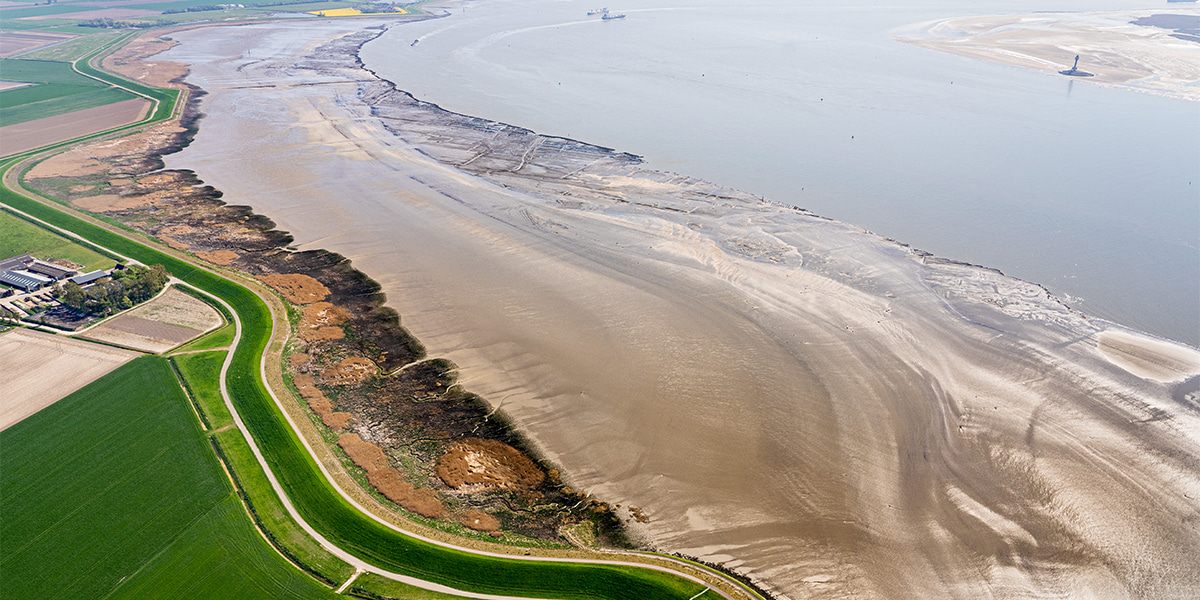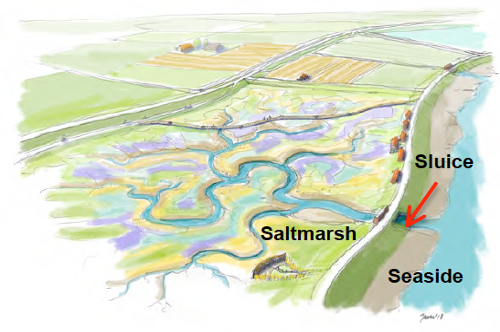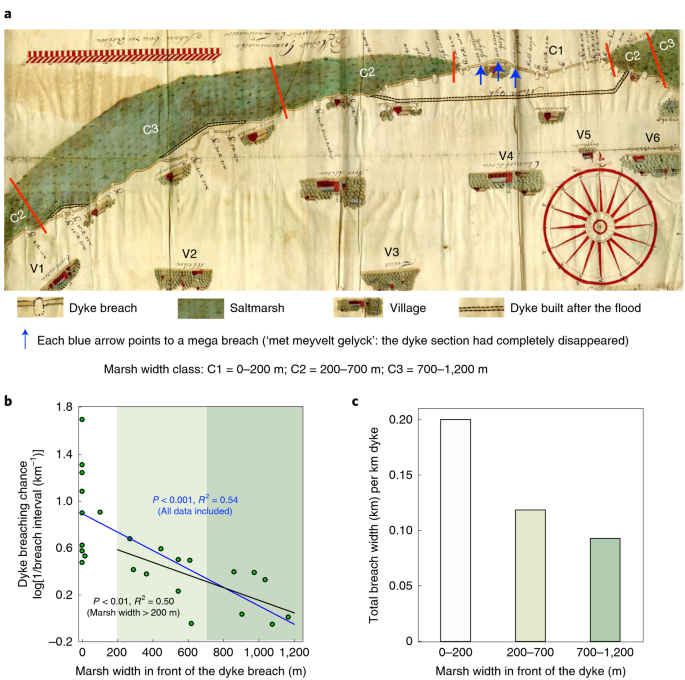Historic floods reveal hidden value of nature for flood defense
Published in Sustainability
Over the last few years, the concept of nature-based flood defense that supplement grey (engineered defenses) with green features (coastal wetlands) to mitigate the rising coastal flood risks under global change, has received growing societal and scientific attention. Whereas coastal wetlands like salt marshes are known to be able to reduce storm waves, people are still skeptical on the added value of natural defenses as their performance during the real-world, extreme storms has rarely been shown. In this study, we dug into historic records of two major flood disasters dating to 1717 and 1953 and found that the value of nature for flood defense during catastrophic storms has actually been evident for hundreds of years.

Our analyses show that salt marshes have reduced the number and total width of dike breaches during the well-known 1717 historic flood disaster. The occurrence of dike breaching decreased with marsh width. More interestingly, the 1953 flood disaster further demonstrates that salt marshes are not only ‘wave absorbers’ that ease wave attacks on the dike but are also ‘flood fighters’ that lower the flood depth by limiting the size of breaches when the dike would fail during severe storms. This previously untold function of natural defenses can save many lives by lowing inundation depth and the speed of the flooding, offering more evacuation time.
These findings should stimulate novel designs of nature-based coastal defenses by smartly harnessing different natural flood defense functions. To harness natural defense, salt marshes or mangroves ideally have to be preserved or developed at the seaside of the dike to buffer the waves. However, even if this is not possible, we can still enhance coastal safety by creating coastal wetlands in between double dikes, where a secondary more landward dike is present and the most seaward primary dike is opened to allow natural processes to ensure marsh development. Albeit no longer useful for wave reduction, such wetlands are still highly valuable for flood protection by making the landward dike safer and continue to do so in the long run with a rising sea.

Double dykes for flood safety
Publication
Zhenchang Zhu , Vincent Vuik, Paul J. Visser, Tim Soens, Bregje van Wesenbeeck, Johan van de Koppel, Sebastiaan N. Jonkman, Stijn Temmerman and Tjeerd J. Bouma.
Historic storms and the hidden value of coastal wetlands for nature-based flood defences
Nature Sustainablity, DOI: 10.1038/s41893-020-0556-z
Follow the Topic
-
Nature Sustainability

This journal publishes significant original research from a broad range of natural, social and engineering fields about sustainability, its policy dimensions and possible solutions.
What are SDG Topics?
An introduction to Sustainable Development Goals (SDGs) Topics and their role in highlighting sustainable development research.
Continue reading announcement





Please sign in or register for FREE
If you are a registered user on Research Communities by Springer Nature, please sign in